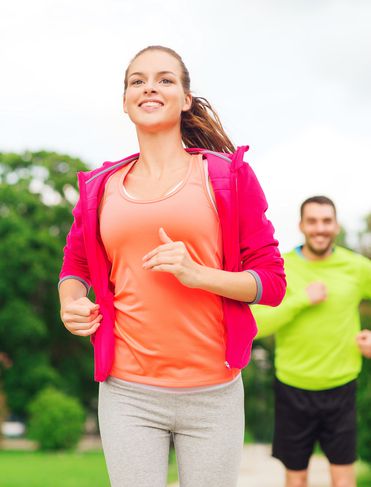Cupping Is the Culprit Behind Those Purple Dots
Cupping is the next big thing. It has entered our homes thanks to Olympians and professional athletes displaying its distinctive purple dots. Although it has gained recent popularity, cupping is an ancient technique that originated in China and dates back thousands of years. It is only one of the many techniques that falls under Traditional Chinese Medicine. Cupping is commonly practiced all over the world, in places like Korea, Greece, Poland, and Mexico, to name a few.
Let’s take a closer look at this popular technique’s many benefits and see why it’s worth giving a try.
What Is Cupping Therapy?
Cupping involves placing specially-designed cups on the skin and creating a suction. This suction allows lactic acid and toxins to express on the skin’s surface. Oftentimes, a pink, red, or even purple mark will appear – not from bruising, but instead, as a sign that lactic acid and toxins have been released. The mark typically lasts for 1-3 days but for some people may last for a week or longer.
Types of Cupping
One of the oldest type of cupping is fire cupping which is done with glass cups. This involves creating a suction by removing the air inside the cup with fire. The practitioner quickly places the cup on the patient. Because the fire does not touch the cup itself, the cup does not get hot. The practitioner can adjust the suction of the cup manually to fit the patient’s comfort level.
A modern take on fire cupping is pneumatic cupping. It involves removing the air inside the cup to create a suction using a pneumatic (or air) pump. No fire needed. To adjust suction, the practitioner can let air out through a valve on the cup. In our clinic, we prefer pneumatic cupping because we don’t like open flames near our patients.
How Does Cupping Work?
In Traditional Chinese Medicine, where there is impaired circulation in the body, there is pain. The way cupping works is it increases circulation, causes vasodilation, and in effect, removes the impaired circulation. This means fresh blood and qi are able to circulate through the area.
What Does Cupping Treat?
Cupping improves circulation to the muscles and is most often used to relax tight or tense muscles and alleviate pain. It can also be used for a number of health concerns such as seasonal allergies, common cold, nausea, upset stomach, depression/anxiety, and insomnia as well.
Is It Safe?
Yes when performed by a well-trained and experienced practitioner. In the U.S., licensed acupuncturists and massage therapists are the most common health professionals who offer cupping services. Always ask a practitioner about their training and experience with cupping.
Does It Hurt?
No. Although cupping looks painful, it isn’t. It actually feels comfortable, almost like a massage.
Benefits of Cupping
Here are a few of the many benefits of cupping:
- Decreased pain
- Release of muscle tension/tightness
- Increased range of motion
- Reduction of muscle spasm
- Increased sense of well-being
- Settled upset stomach
- Alleviation of nausea
- Stop cough
- Improved breathing
- Reduced stress
Some patients feel the effects of cupping instantaneously. Others feel them up to 12-24 hours after a cupping session. Considering the severity of your health concern and how long you’ve been experiencing it, you may need a course of treatment (i.e., multiple cupping sessions) to notice improvement of your health concerns.
Post-Cupping Care
Always eat something after a cupping session and stay hydrated. We recommend to covering the marks at all times (except when showering) and avoiding swimming. If you don’t, wind may get into the muscles and cause more pain. Applying a pain-relieving oil may help the marks disappear faster.
Are You a Good Candidate for Cupping?
Although cupping is a fantastic technique, it is not for everyone. If you feel depleted or experience extreme fatigue, cupping may not be a good option for you. Many clinics require a short consult before cupping to determine if it is right for you.
How Do You Find Someone Who Offers Cupping?
Because cupping is one of the many techniques under Traditional Chinese Medicine, most licensed acupuncturists have received training in cupping as a part of their Master’s degree. Some massage therapists offer cupping. Combining cupping with acupuncture/massage is a great way to help you relieve stress and reduce pain.
No matter who you see, always ask practitioners about their training and experience with cupping. Always listen to your gut and go with someone you trust.
All in all, cupping is a fantastic technique and worth trying if you haven’t already.
Got more questions? Ask Lynn for more information about cupping here.
About Author
Lynn Palmgren helps people get rid of pain and balance hormones so they can feel good again. She specializes in acupuncture and cupping for pain management, insomnia, hormone imbalance, and stress relief. She is a licensed acupuncturist and Chinese herbalist and co-owns Palmgren Acupuncture in Oak Park, Illinois.
Articles You Might Like:
Pain Relief: 3 Tips to Try at Home
Should You Apply Ice or Heat for Pain?
The Real Reason You Crave Bacon


